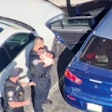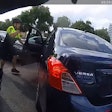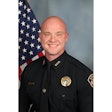KENEDY, Texas – In the year since the worst prison breakout in Texas history, sweeping changes have been made not only in the Connally Unit three miles south of Kenedy where the breakout took place, but in all of Texas' 109 prisons.
Since last December, when seven prisoners made their brazen escape, setting off a six-week national manhunt, the state prison system has put into place nearly all of the changes suggested by administrators and an outside auditor that reviewed the system.
The nationally publicized incident highlighted a chronic shortage of correctional officers and what critics called unsafe security practices.
Six of the escapees were captured in Colorado, and the seventh killed himself rather than be taken. Ringleader George Rivas has been convicted of capital murder and sentenced to die for the Dec. 24 fatal shooting of Irving police officer Aubrey Hawkins during a sporting goods robbery in Irving.
Five surviving escapees — Michael Rodriguez, Joseph Garcia, Patrick Murphy, Donald Newbury and Randy Halprin — await trial in the killing. At the time, all were serving long sentences for violent crimes.
In San Antonio, Rodriguez's 62-year-old father, Raul, stands accused of arranging the purchase and delivery of the getaway vehicle used by the prisoners.
In cutting a deal for herself, his former friend, Patsy Gomez, has promised to testify against the elder Rodriguez at his trial, scheduled for January. Charged with multiple counts of aggravated kidnapping and robbery for the alleged crimes the escapees committed during their escape from the Connally Unit, he faces up to life in prison if convicted.
Connally guards took the brunt of the blame for the breakout, and the agency has pushed through sweeping reforms to prevent another embarrassing incident. During the escape, the inmates took 11 prison employees hostage as they outsmarted and overpowered them.
"This escape sent a message and a ripple throughout the entire prison system that we are dealing with potentially dangerous individuals and therefore we must perform to the maximum at every minute we are on duty," Larry Todd, a prison spokesman, told the San Antonio Express-News. "We do not want, nor will we accept, another tragic situation."
Inmates no longer are allowed to enter guard towers, where some of the escapees obtained weapons used in the breakout. Guards stationed in towers must recognize inmates leaving a gate, no longer depending on a telephone voice.
Inmates face tighter restrictions on where they must report to be counted every four hours. The day of the breakout, escapees used a phone to report they had been counted during a routine check of the inmate population.
To stay alert, guards who once worked lengthy shifts in the towers now work no more than eight hours at a time.
While a review is still under way, the system by which inmates are assigned to jobs has been changed.
"An inmate with a violent offense or who is an escape risk is not going to get a saw," Todd said.
Inmates with a history of violence no longer can work outside the prison perimeter — a privilege once extended to violent offenders who were deemed low risk.
Offenders with a history of escape or staff assault and who have served fewer than 10 years of a sentence no longer work in jobs that give them access to multiple areas of the prison.
In the year since the escapees made their infamous getaway, outwitting and overpowering nearly a dozen employees and stealing their clothes to literally drive out the door, only one inmate has broken out of a Texas prison. He was recaptured two days later in Mississippi.
Comparing that to the 16 escapes in 2000, prison officials believe they're doing something right. But there is no such hing as an escape-proof prison, Todd said. "We have a prison system that's run by humans, and humans make errors. We have to work to eliminate errors," he said.
















